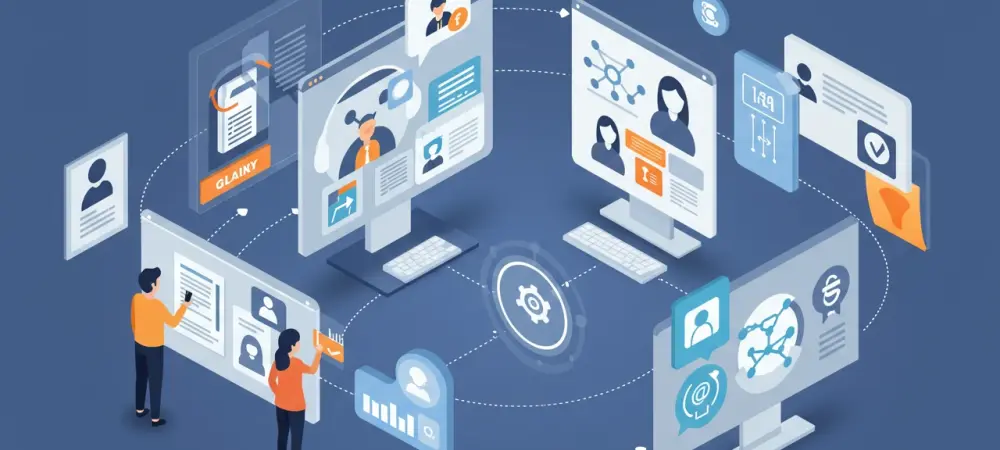Ling-Yi Tsai is a renowned expert in HR technology with extensive experience in helping organizations harness the power of technology for better talent management and workforce analytics. Ling-Yi shares her insights drawn from the latest Capterra HR Software Trends Survey, focusing on the challenges and opportunities faced by Canadian HR leaders in integrating AI to address retention issues.
What is the current biggest challenge for Canadian HR leaders, according to the Capterra 2025 HR Software Trends Survey?
Employee retention stands as the most significant challenge, with over half of the Canadian HR leaders reporting it as their primary concern. It’s fascinating because while retention issues are front and center, the means to address them through technology already exist. It’s a mix of concern and opportunity waiting to be harnessed.
How does the use of AI in HR software impact employee retention rates according to the survey findings?
The survey is quite revealing here. It shows that organizations using AI in HR software have better employee retention rates. Specifically, 39% of these companies noted an increase in retention, compared to only 26% of those that didn’t use AI. This difference highlights the potential effectiveness of AI in enhancing retention when implemented properly.
What significant barrier is preventing Canadian companies from fully utilizing AI technology in HR?
A major barrier is the AI skills gap. Despite having access to AI technology, many companies fail to utilize it effectively. The survey indicates that 43% of HR leaders identify a lack of AI skills among their teams as a primary challenge, creating a disconnect between the technology available and its application in solving crucial problems like retention.
How many Canadian HR leaders identified a lack of AI skills as a primary challenge to AI adoption?
The numbers are striking—43% of HR leaders pointed out insufficient AI skills as a primary barrier. This statistic signifies a critical need for upskilling within HR departments to make effective use of existing AI tools.
Why is there a hesitation among Canadian businesses to embrace AI, despite its potential benefits?
Hesitation often stems from both skills gaps and concerns about AI’s complexities. Companies recognize the potential of AI, but a lack of internal skills leads to apprehensions. Additionally, there’s cautiousness about AI’s decision-making processes and the risks involved, which further contributes to the reluctance.
What percentage of Canadian organizations have AI features in their HR software, and how many actually use these features?
According to the survey, 67% of Canadian organizations have AI features embedded in their HR software. Yet, less than half—only 41%—actively utilize these features. This underutilization signals an opportunity gap where technical capabilities exist but aren’t fully leveraged due to various constraints.
What are the main operational challenges related to training in Canadian HR, based on the survey?
Training emerges as a critical hurdle. Almost 44% of HR leaders cite upskilling current employees as a major operational challenge. Additionally, there is concern about training new users on HR software, reported by 46% of respondents. These challenges highlight the increasing need for robust training mechanisms and strategies.
What concerns do Canadian HR leaders have regarding the adoption of AI?
Concerns primarily revolve around understanding AI’s value and risk assessment, with 40% of leaders expressing apprehension. There’s also a challenge in comprehending how AI makes decisions, pointed out by 42% of respondents. These worries underscore the need for transparency and better education on AI functionalities and benefits.
How significant is security when Canadian HR leaders are selecting new HR software?
Security is paramount, with 60% of leaders considering it a critical aspect of new HR software selection. This concern reflects a broader awareness of data privacy and protection, especially when introducing advanced technologies like AI into HR systems.
What strategies do you think Canadian businesses should prioritize to overcome the AI skills gap?
To bridge the AI skills gap, Canadian businesses should focus on targeted upskilling programs and collaborate with educational institutions to incorporate AI into curriculums. Encouraging a learning culture within organizations, where employees are motivated to continually enhance their skills, will also be crucial.
How can Canadian companies foster a culture of continuous learning to better leverage AI technology?
Organizations should promote an environment that values ongoing education, offering opportunities like workshops and access to online courses focusing on AI. Leadership can play a pivotal role by actively participating in these initiatives and demonstrating the benefits that such technologies can bring to career development and organizational success.
Why might the future of HR in Canada depend on adapting to technological shifts, according to the report?
The future of HR in Canada hinges on the ability to adapt to technological advancements because these tools can dramatically reshape workforce management. Effective utilization of AI technologies could transform recruitment, onboarding, and talent retention processes, proving vital in staying competitive in a rapidly evolving job market.
Given the identified challenges, what role do you see upskilling and effective training playing in addressing workforce retention issues in Canada?
Upskilling and effective training are foundational in tackling workforce retention challenges. By investing in employees’ professional growth, companies not only enhance their technological capabilities but also boost job satisfaction and loyalty. This creates a more engaged and capable workforce, crucial for reducing turnover rates.
How can understanding the risks and decision-making processes of AI alleviate concerns for HR leaders?
Clear comprehension of AI’s risks and decision-making mechanisms can reduce fears by providing transparency and predictability. When HR leaders understand how AI arrives at its conclusions, they feel more confident in using it for critical tasks, thus incrementally adopting more intelligent systems that aid retention strategies.
What steps can be taken to integrate AI features more effectively into existing HR systems in Canada?
To effectively integrate AI, businesses should start with a clear roadmap outlining objectives, potential challenges, and required resources. Incorporating feedback from HR teams and encouraging collaboration between IT and HR departments can help tailor solutions to specific needs, ensuring smoother integration and maximizing potential benefits.

